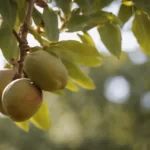Crabgrass, often seen as the bane of gardeners and lawn enthusiasts, is a common and resilient weed that can be found invading lawns and gardens worldwide. While some may overlook it as just another part of the lawn, crabgrass can have detrimental effects on the health and appearance of garden spaces. This article aims to shed light on why crabgrass is considered harmful to lawns and gardens.
What is Crabgrass?
Crabgrass (Digitaria spp.) is an annual grassy weed known for its ability to thrive in harsh conditions. It is characterized by its low-growing, sprawling habit, and light green color, often forming clumps that are easily distinguishable from most turfgrasses. Crabgrass seeds can germinate throughout the growing season, giving it a significant advantage over desirable lawn grasses that have a more limited growing period.
Impact of Crabgrass on Lawns
The invasive nature of crabgrass poses several problems for lawns and gardens:
- Rapid Growth and Spread: Crabgrass grows quickly and can spread across lawns in a short period. Its seeds are prolific and can remain viable in soil for many years, making future infestations likely.
- Competition with Lawn Grasses: Crabgrass competes aggressively with lawn grasses for space, sunlight, nutrients, and water. It often emerges earlier in the season and can quickly overshadow and outcompete the slower-growing desirable grasses, leading to sparse and patchy lawns.
Aesthetic Concerns
Crabgrass significantly detracts from the aesthetic appeal of lawns and gardens:
- Uneven Lawn Appearance: The presence of crabgrass disrupts the uniformity and texture of lawns, making them look unkempt and poorly maintained.
- Difficulty in Maintenance: Managing a lawn infested with crabgrass is challenging as it requires more effort to maintain a consistent and attractive appearance.
Health of Lawn and Soil
Apart from the visual aspects, crabgrass affects the overall health of the lawn and the soil:
- Depletion of Soil Nutrients: Crabgrass is a voracious consumer of nutrients, often depleting the soil of essential elements needed by other plants and grasses.
- Soil Moisture Reduction: Due to its dense growth, crabgrass can absorb significant amounts of moisture from the soil, leaving less available for desirable lawn grasses and plants.
Challenges in Controlling Crabgrass
Once established, crabgrass can be notoriously difficult to control, posing several challenges for lawn care:
- Resilience and Adaptability: Crabgrass seeds have the ability to lie dormant in soil for years and can germinate whenever conditions become favorable, making eradication a long-term challenge.
- Identification Issues: In its early stages, crabgrass can be hard to distinguish from certain types of desirable lawn grasses, leading to delayed action against its spread.
Prevention and Management Strategies
Effective control of crabgrass involves both preventive measures and active management:
- Pre-Emergent Herbicides: Applying pre-emergent herbicides before the crabgrass seeds germinate is a common preventive strategy. Timing is crucial, as these herbicides are effective only if applied before the crabgrass seeds start to sprout.
- Proper Lawn Care: Maintaining a healthy, dense lawn can help prevent the establishment of crabgrass. This includes regular mowing at the correct height, proper fertilization, and adequate watering.
- Manual Removal: For smaller lawns or minor infestations, manually pulling out crabgrass can be effective. This should be done before the plants set seed to prevent further spread.
Environmental Considerations
The methods used to control crabgrass can have environmental implications:
- Impact of Herbicides: While effective, chemical herbicides can have negative impacts on the environment and beneficial organisms in the soil. Care should be taken to use these products responsibly and as a last resort.
- Promoting Biodiversity: A lawn that’s too manicured and free of all weeds can sometimes be less supportive of local ecosystems. Striking a balance is key, where the lawn is healthy but also allows for some natural diversity.
Conclusion
Crabgrass, with its invasive and aggressive growth habits, poses a significant challenge to maintaining healthy and aesthetically pleasing lawns and gardens. Its ability to quickly spread and outcompete desirable grasses can lead to unsightly, uneven lawns and depleted soil conditions. While it’s challenging to control, understanding the nature of crabgrass and implementing effective management strategies can significantly mitigate its impact.
Balancing aesthetic goals with environmental considerations is crucial in dealing with crabgrass. While herbicides can be an effective solution, their use should be judicious and combined with sustainable lawn care practices. Emphasizing preventative measures, such as maintaining a healthy lawn and timely application of pre-emergent herbicides, can reduce reliance on chemical treatments and contribute to a more environmentally friendly approach.
The battle against crabgrass in lawns is ongoing and requires a combination of vigilance, proper lawn care practices, and patience. By adopting an integrated approach that includes mechanical removal, appropriate lawn maintenance, and responsible herbicide use, gardeners and homeowners can maintain lush, green spaces without compromising environmental health.
In conclusion, while crabgrass is often seen as a nuisance in lawns and gardens, understanding its growth patterns and adopting comprehensive management strategies can effectively control its presence. A well-maintained lawn, free of invasive weeds like crabgrass, not only enhances the beauty of outdoor spaces but also supports the overall health of the garden ecosystem. With the right care and attention, you can enjoy a vibrant, healthy lawn that thrives season after season.



